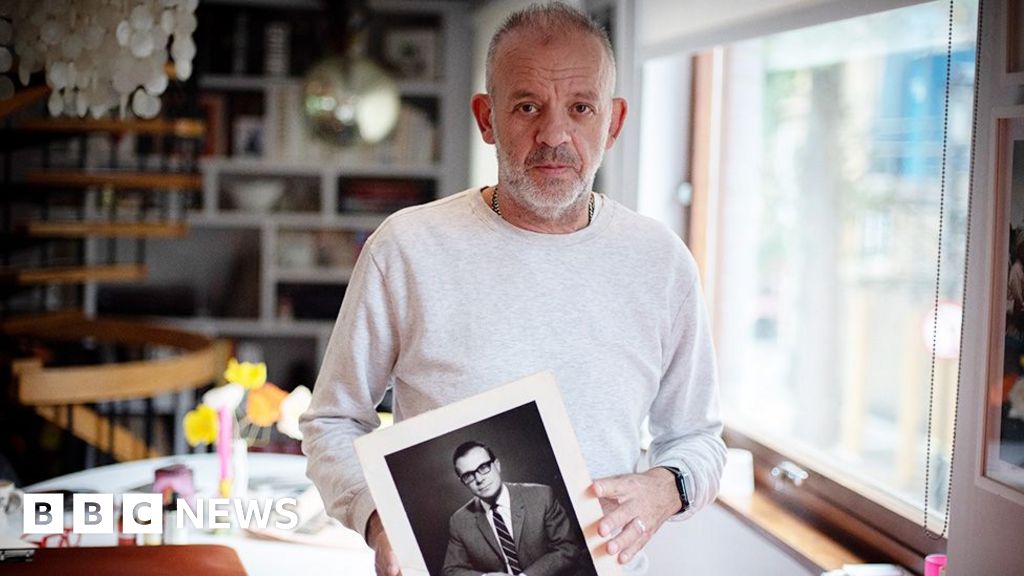How an old suitcase revealed a hidden family fortune, lost under Nazi rule
1 hour ago Share Save Charlie Northcott and Ben Milne Share Save
BBC
It started with a suitcase hidden under a bed. It was 2009, and Antony Easton's father, Peter, had recently died. As Antony started to engage with the messy business of probate, he came across a small brown leather case in his father's old flat in the Hampshire town of Lymington. Inside were immaculate German bank notes, photo albums, envelopes full of notes recording different chapters of his life - and a birth certificate. Peter Roderick Easton, who had prided himself on his "Englishness" (and been an Anglican) had, in fact, been born and raised in pre-war Germany as Peter Hans Rudolf Eisner, a member of one of the wealthiest Jewish families in Berlin.
Charlie Northcott/BBC The suitcase that held Antony's father's secrets
Despite hints about his father's origins growing up, the contents of the suitcase shone a light into a past that Antony knew almost nothing about. The revelations would lead him on a decade-long trail, revealing a family devastated by the Holocaust, a vanished fortune worth billions of pounds and a legacy of artwork and property stolen under Nazi rule. Black-and-white photographs gave a glimpse of Peter's early life, far removed from his son's modest upbringing in London - they showed a chauffeur-driven Mercedes, mansions staffed by servants, staircases ornately carved with angels. More ominously, one picture showed 12-year-old Peter Eisner smiling with friends, a Nazi flag rippling in the distance.
Antony Easton Antony's father, Peter (in the middle) aged 12
"I felt it was a hand reaching out from the past," says Antony. He says his father was a quiet and serious man, if prone to bouts of anger. He avoided talking about his childhood and always shut down questions about his slight German accent.
Continue Reading on BBC News
This preview shows approximately 15% of the article. Read the full story on the publisher's website to support quality journalism.
